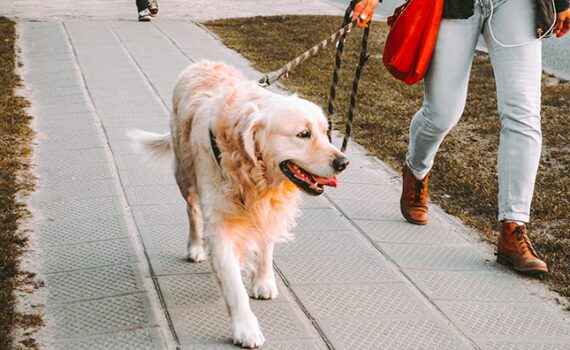
January is National Walk Your Dog Month!
January is Walk Your Dog Month and as you look at those frosty temperatures it might be hard to fathom bundling up and walking when the fireplace feels so nice. That’s the point behind January’s designation as Walk Your Dog Month. When it is cold and there are limited hours of sunlight, we all need a little extra motivation.
Your Dog is Your Best Exercise Partner
Did you make a New Year’s resolution to get more active and lose some weight in 2023? Lots of us did, and while our intentions are strong most of us have a nagging doubt that we’ll stick to our program. I have a helpful suggestion: how about tackling your workouts with a buddy? Research has shown that people who have an exercise partner tend to continue with their exercise routines much longer than people who try to go it alone. Now, I can hear you grumbling that having an exercise partner is not convenient: arranging schedules, extra driving, they are crabby in the morning, you’re too tired at night, etc. Yes, all of this may be true, but do you know you may already have the perfect exercise partner right under your own roof? Who is that you ask? Your dog, of course!
No arranging schedules or extra driving. He’s right there, probably holding his leash and begging to go out on an adventure with you. Never crabby in the morning, at noon, or at night, your dog longs to explore new avenues with you. Keywords – with you. Dogs are pack animals and crave the attention of their pack leader, you, so you have a built-in exercise partner sitting beside you right now eager to begin.
How to Know if Your Dog is Healthy Enough
If your dog is older or has medical issues his exercise options may be limited. Always consult your vet before making any activity changes in a dog with physical problems. But if your dog is fit or only a little overweight, he should be able to join you in your exercise program without any problems, especially if you start slowly and increase distances gradually. Remember to factor in your dog’s age. If you have a puppy, short walks will be the rule until his joints are fully mature. A general rule is the larger the dog the longer it takes for his joints to develop. Dogs over 100 pounds are not fully grown until around 18 months, smaller dogs range from around 9 months to 15 months depending on size. Once your dog is full-grown, walks can increase in length and intensity.
Where Should You Walk Your Dog
If your day is going to be super busy or you aren’t feeling motivated, speed-walk your dog around your neighborhood, but for more interesting walks you might try visiting local parks, wildlife areas (always leashed, of course), and other open environments. Since this is a mutually beneficial exercise program and you may be working toward cardio goals for yourself, be sure to allow some warm-up and cool-off times for your dog to enjoy some good sniffing.
Your Dogs Goals in a Walk
Remember that while you have walking goals, i.e., increased heart rate, weight loss, etc., your dog has goals, too. His dominant sense is olfactory so sniffing new smells is how he gathers information about his world. This is prime mental stimulation for your four-footed friend which is as beneficial as the physical exercise itself. So be sure to give your dog some opportunities for sniffing during your walks.
Start the New Year out right with the healthy goal of a walk a day with your dog and moving forward aim to make every month Walk Your Dog Month. It will be an engaging experience for both of you.
By Carol Kendig